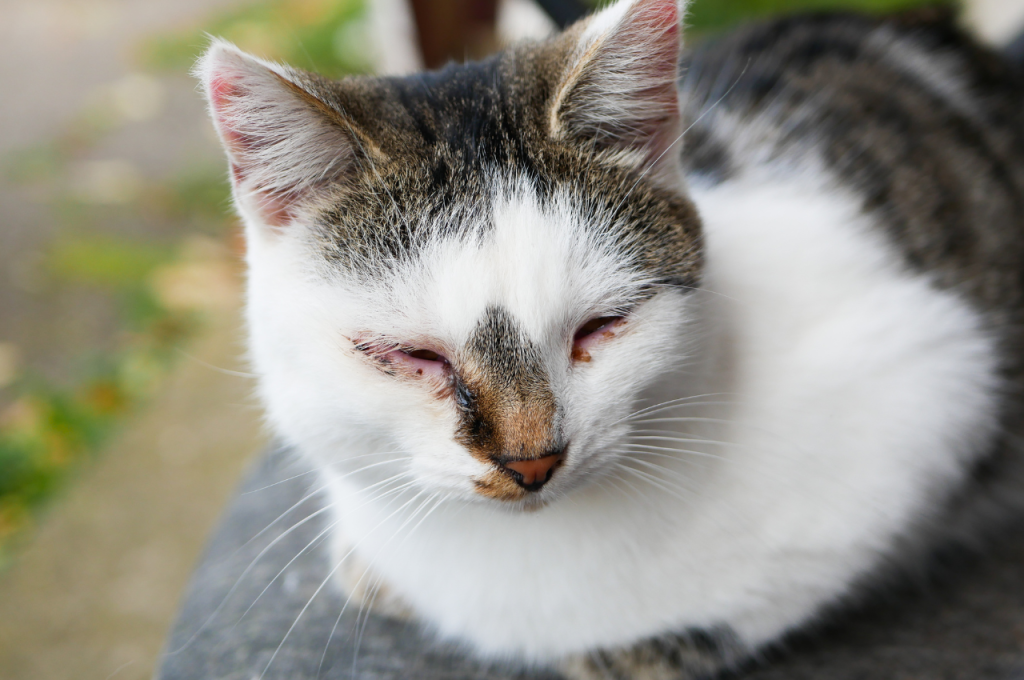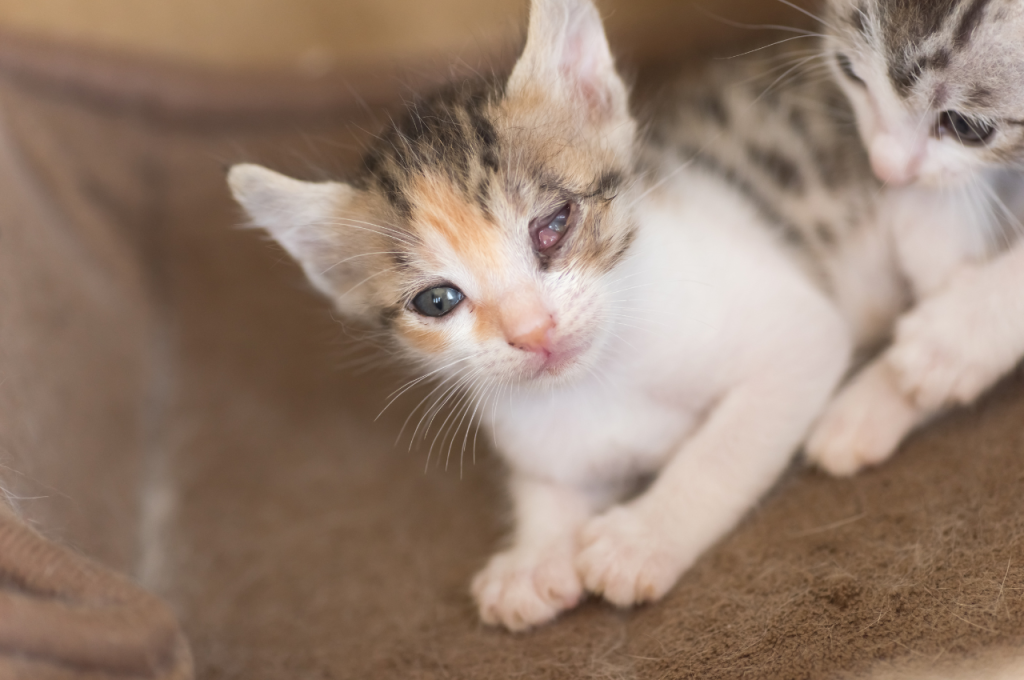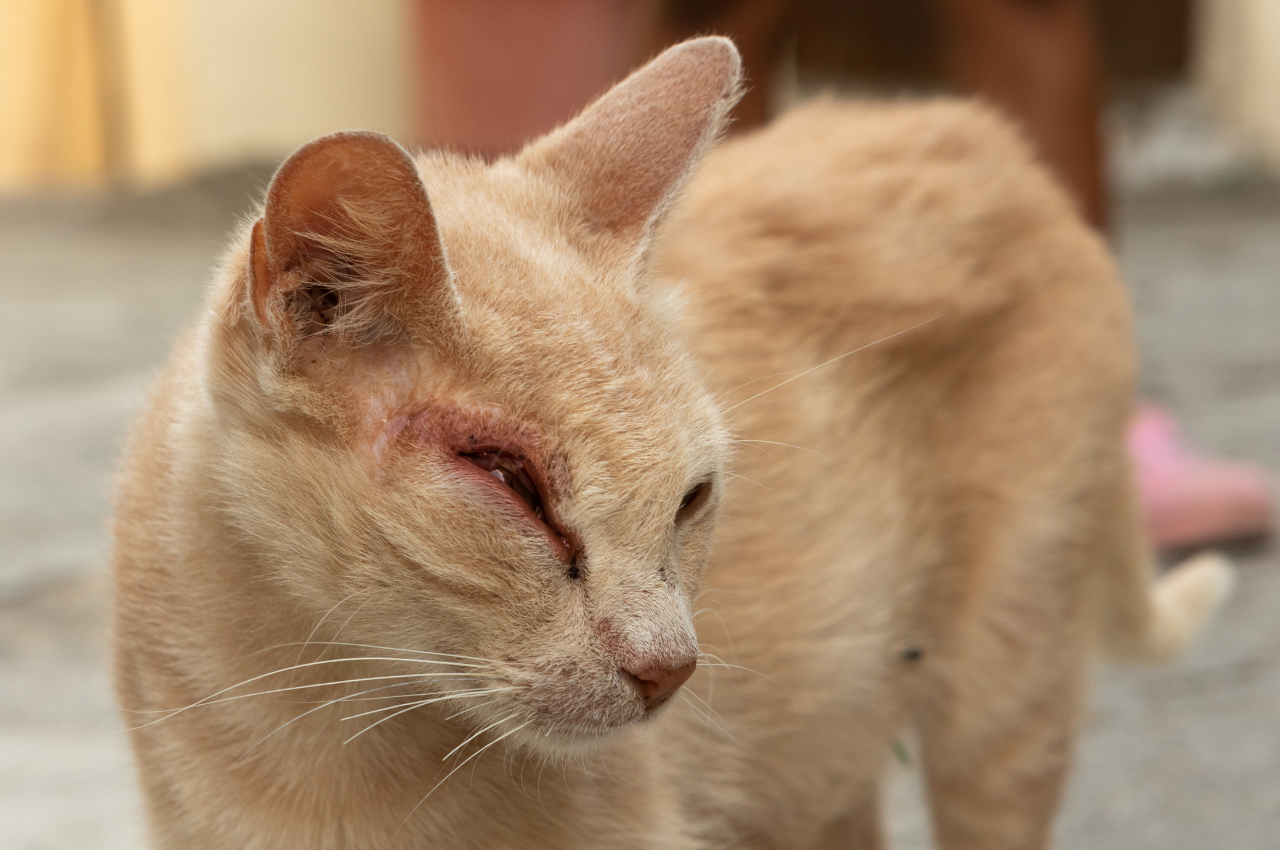A common eye problem in cats is conjunctivitis, causing redness, discharge, and squinting. Cats may develop this condition due to infections, allergies, or irritants.
Conjunctivitis requires prompt veterinary attention to prevent complications and ensure proper treatment. Keeping your cat’s eyes clean and monitoring any changes in their appearance can help in the early detection and management of this common eye issue. Regular check-ups with a veterinarian can aid in maintaining your cat’s eye health and overall well-being.
Understanding the signs and symptoms of conjunctivitis can enable timely intervention, leading to better outcomes for your feline companion.
Introduction To Feline Vision Issues
The Importance Of Eye Health In Cats
Cats rely heavily on their vision, making it crucial to maintain their eye health. Regular monitoring and care can help prevent potential vision issues that may impact their overall well-being.

Recognizing Signs Of Eye Problems
Being attentive to signs of eye problems in cats is essential for early detection and treatment. Keeping an eye out for symptoms such as excessive tearing, redness, cloudiness, or changes in the appearance of the eyes can aid in identifying potential issues promptly.
Conjunctivitis: A Frequent Feline Complaint
Conjunctivitis, also known as pink eye, is a common eye problem in cats. It is characterized by the inflammation of the conjunctiva, the thin, transparent tissue that lines the inner surface of the eyelid and covers the white part of the eye. This condition can cause discomfort for your feline friend, so it’s important to be aware of the symptoms and treatment options for conjunctivitis in cats.
Symptoms Of Conjunctivitis
Recognizing the symptoms of conjunctivitis in your cat is crucial for timely intervention. Common signs of conjunctivitis include redness in the whites of the eyes, excessive tearing or discharge, squinting, and pawing at the eyes. If you notice any of these symptoms in your cat, it’s important to seek veterinary care promptly to address the issue.
Treatment Options
When it comes to treating conjunctivitis in cats, your veterinarian may prescribe antibiotic eye drops or ointments to clear up any bacterial infections. Additionally, they may recommend warm compresses to help soothe your cat’s eyes and reduce discomfort. It’s crucial to follow the prescribed treatment regimen and attend any follow-up appointments to ensure the condition resolves effectively.
Cataracts In Cats: More Than A Senior Problem
When we think of cataracts, we often associate them with aging and human eye health. However, cataracts can also affect our feline friends. Contrary to popular belief, cataracts in cats are not solely a senior problem. These clouded lenses can occur in cats of any age, causing vision impairment and potential complications. In this article, we will explore how to identify cataracts in cats and discuss ways to manage vision loss effectively.
Identifying Cataracts
Identifying cataracts in cats may require keen observation and attention to detail. While it can be challenging to notice early signs, there are a few symptoms to look out for:
- Cloudiness or opacity in the cat’s eyes
- Changes in the cat’s behavior, such as bumping into objects or difficulty navigating familiar surroundings
- An increased sensitivity to light
If you notice any of these signs, it is crucial to consult with a veterinarian for a proper diagnosis. Remember, early detection can lead to more effective treatment options.
Managing Vision Loss
Once cataracts have been identified, managing vision loss becomes a primary concern. While surgery may be an option for some cases, it is not always feasible or necessary. Here are a few strategies to help your cat cope with vision impairment:
- Provide a safe and familiar environment for your cat, minimizing obstacles and hazards.
- Keep your cat’s routine consistent to help them navigate their surroundings more easily.
- Use auditory cues, such as verbal commands or familiar sounds, to assist your cat in finding their way.
- Consider using scented markers or pheromone sprays to help your cat identify specific areas or objects.
- Ensure regular veterinary check-ups to monitor the progression of the cataracts and adjust management strategies accordingly.
By implementing these measures and providing the necessary support, you can help your furry friend adapt to their changing vision and maintain a good quality of life.
Corneal Ulcers: The Invisible Threat
Corneal ulcers are a common eye problem in cats, often caused by infections or scratches on the cornea. These ulcers can be difficult to detect, but they are a serious threat to your feline friend’s vision and overall eye health. Regular check-ups and prompt treatment are crucial in managing this invisible danger.
Cats can experience a variety of eye issues, with corneal ulcers being a common and potentially serious problem. These ulcers are often invisible to the naked eye, making them a hidden danger for our feline friends.
Causes Of Corneal Ulcers
Corneal ulcers in cats can be caused by a range of factors, including trauma such as scratches or foreign objects entering the eye, infections from bacteria or viruses, and dry eye syndrome which leads to a lack of moisture on the cornea’s surface.
Healing The Cornea
Treating corneal ulcers in cats involves identifying and addressing the underlying cause, administering medication such as antibiotic eye drops or ointments, and protecting the eye from further damage. In severe cases, surgical intervention may be necessary to promote healing and prevent long-term damage. By being aware of the causes and potential treatments for corneal ulcers in cats, pet owners can help ensure their furry companions receive the care they need to maintain optimal eye health.
Feline Herpesvirus: A Common Culprit
Cats can experience various eye problems, with Feline Herpesvirus being a frequent cause. This virus, also known as Feline Viral Rhinotracheitis (FVR), affects a large percentage of the cat population.

Understanding The Herpesvirus
Feline Herpesvirus is highly contagious and spreads through direct contact with an infected cat’s saliva, nasal discharge, or ocular secretions. Once infected, a cat may experience symptoms like eye discharge, sneezing, and nasal congestion.
Long-term Management Strategies
- Provide a stress-free environment for your cat.
- Keep your cat’s living area clean and well-ventilated.
- Consult with your veterinarian for appropriate antiviral medications.
- Regularly monitor your cat’s eye health and overall condition.
By understanding the nature of Feline Herpesvirus and implementing long-term management strategies, you can help your cat lead a healthier and more comfortable life.
Glaucoma In Cats: A Silent Condition
Glaucoma in cats is a silent condition that affects their eyes. It is a common eye problem that can lead to vision loss if left untreated.
Detecting Glaucoma Early
Glaucoma in cats is a serious and potentially blinding condition. It is often referred to as a “silent condition” because cats tend to hide their pain, and the symptoms are not always immediately apparent. Detecting glaucoma early is crucial to preventing permanent vision loss. One way to detect glaucoma is by monitoring your cat’s behavior. If you notice any changes in their behavior, such as lethargy, loss of appetite, or increased aggression, it may be a sign that something is wrong. Another way to detect glaucoma is through regular eye exams with your veterinarian. During the exam, your vet will check for high intraocular pressure, which is a key indicator of glaucoma.
Surgical And Medical Interventions
If your cat is diagnosed with glaucoma, there are several surgical and medical interventions that can help manage the condition. Medications such as eye drops can be used to lower intraocular pressure and prevent further damage to the optic nerve. Your vet may also recommend surgery to remove the affected eye or to create a new drainage channel to reduce the pressure. It’s important to note that while these interventions can help manage the condition, they cannot reverse any vision loss that has already occurred. This is why detecting glaucoma early is so crucial to preserving your cat’s vision.
In conclusion, glaucoma in cats is a serious condition that requires prompt diagnosis and treatment. By monitoring your cat’s behavior and scheduling regular eye exams with your veterinarian, you can help detect glaucoma early and prevent permanent vision loss. If your cat is diagnosed with glaucoma, there are several interventions available to manage the condition and preserve your cat’s quality of life.
Progressive Retinal Atrophy: Genetic Predispositions
Cats can be affected by Progressive Retinal Atrophy (PRA), an inherited condition that can lead to blindness. This genetic predisposition causes the cells in the retina to degenerate over time, impacting the cat’s vision. Regular check-ups are crucial for early detection and management of this common eye problem in cats.
Recognizing Retinal Atrophy
Progressive Retinal Atrophy (PRA) is a genetic eye disorder in cats.
Coping With Progressive Vision Loss
Cats with PRA may gradually lose their night vision.
Preventive Measures And Regular Care
To ensure your cat’s eye health, it’s crucial to take preventive measures and provide regular care. One common eye problem in cats is conjunctivitis, which causes redness and discharge. Keeping your cat’s eyes clean and seeking prompt veterinary care can help prevent and address this issue.
Routine Check-ups
Regular vet visits are crucial to detect and treat eye problems early.
Diet And Nutrition For Eye Health
Feed your cat a balanced diet rich in vitamins A, C, and E for optimal eye health.
When To Seek Veterinary Help
A common eye problem in cats is conjunctivitis, which can be caused by infections, allergies, or other underlying health conditions. If your cat is showing symptoms such as redness, swelling, discharge, or squinting, it’s important to seek veterinary help as soon as possible to prevent further complications.
When to Seek Veterinary Help: As a cat owner, it’s important to be aware of common eye problems that your furry friend may experience. While some eye issues may resolve on their own, others may require veterinary attention. Here are some signs that indicate it’s time to seek veterinary help:
Emergency Symptoms:
If your cat experiences any of the following symptoms, seek immediate veterinary attention:
- Bleeding or discharge from the eye
- Sudden blindness or impaired vision
- Eye protrusion or abnormal bulging
- Severe pain or discomfort
- Swelling or redness around the eye
These symptoms may be indicative of a serious eye condition that requires immediate medical attention. Don’t delay seeking help if you notice any of these symptoms.
Choosing The Right Specialist:
When seeking veterinary help for your cat’s eye problem, it’s important to choose the right specialist. Some options include:
| Veterinarian | Ophthalmologist |
| A general veterinarian can diagnose and treat most common eye problems in cats. | An ophthalmologist is a specialist who has undergone additional training in diagnosing and treating eye conditions. |
| They may refer you to an ophthalmologist if your cat’s condition requires advanced treatment or surgery. | An ophthalmologist can provide specialized care for more complex eye conditions. |
Choosing the right specialist can help ensure that your cat receives the best possible care for their eye problem. In conclusion, if you notice any emergency symptoms, seek immediate veterinary attention. When seeking help, be sure to choose the right specialist for your cat’s specific needs. By being proactive about your cat’s eye health, you can help ensure that they maintain good vision and overall wellness.
Embracing A Proactive Approach
Embracing a proactive approach is essential in addressing common eye problems in cats. By being vigilant and observing any signs of discomfort or changes in their eyes, cat owners can take early action to prevent further complications and ensure their feline friends receive the necessary care and treatment.

Summarizing Key Points
- Common Eye Problem in Cats: Cats commonly experience issues like conjunctivitis and cataracts.
- Signs to Watch for: Keep an eye out for redness, discharge, or cloudiness in your cat’s eyes.
- Importance of Early Detection: Early detection can prevent complications and improve treatment outcomes.
Encouraging Owner Vigilance
- Regular Eye Checks: Regularly examine your cat’s eyes for any changes or abnormalities.
- Veterinary Visits: Schedule routine check-ups to monitor your cat’s eye health.
- Consultation: Consult a vet promptly if you notice any concerning symptoms.
Conclusion
Understanding common eye problems in cats is essential for their overall health and well-being. From conjunctivitis to corneal ulcers, recognizing the signs and seeking prompt veterinary care is crucial. By maintaining good hygiene, regular check-ups, and providing a balanced diet, you can help prevent and manage these issues.
Remember, your feline friend’s eyes are windows to their health, so keeping them bright and clear should be a priority. Stay vigilant, and your cat will thank you with purrs and playful antics.
